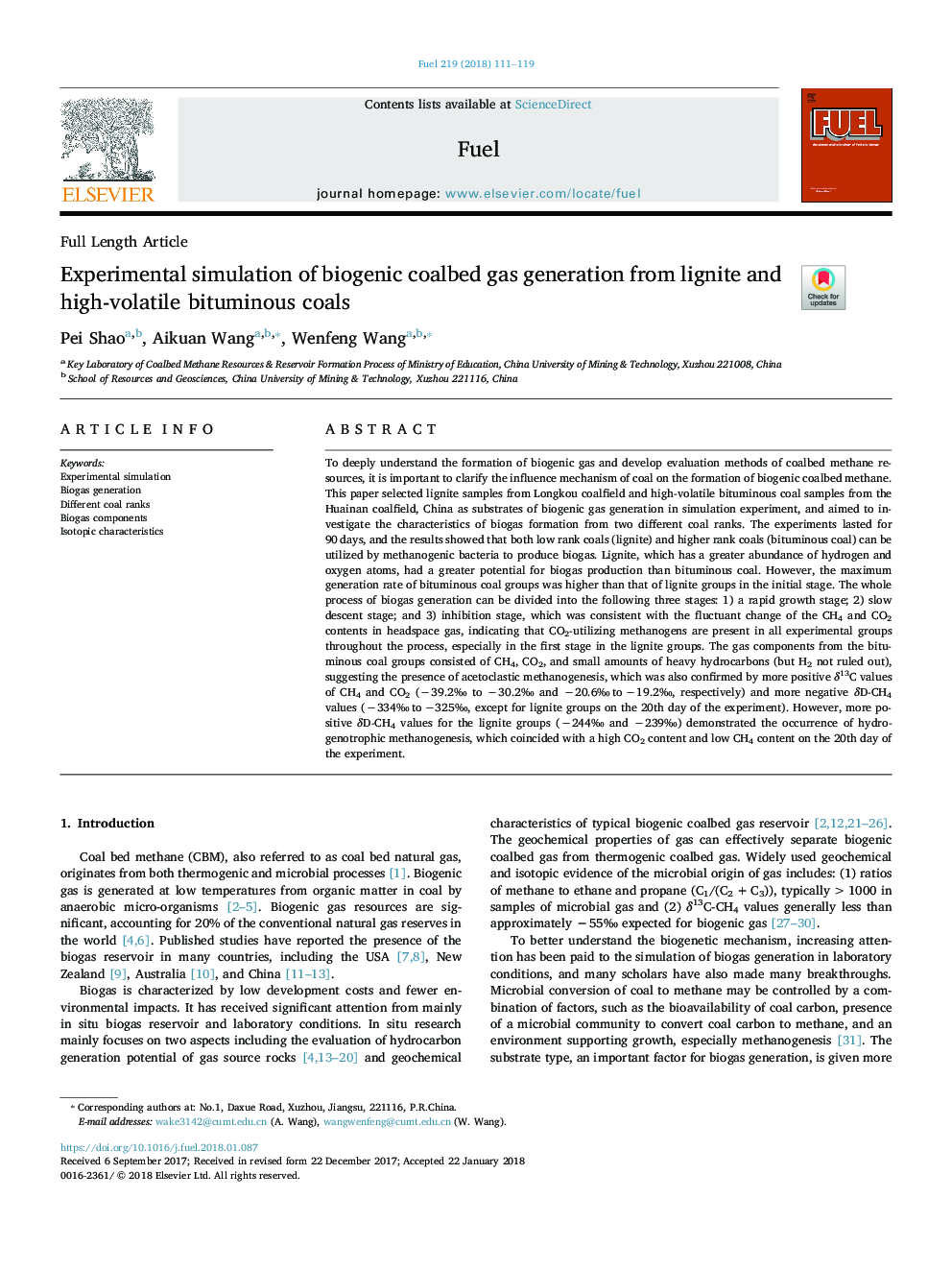| کد مقاله | کد نشریه | سال انتشار | مقاله انگلیسی | نسخه تمام متن |
|---|---|---|---|---|
| 6631808 | 1424945 | 2018 | 9 صفحه PDF | دانلود رایگان |
عنوان انگلیسی مقاله ISI
Experimental simulation of biogenic coalbed gas generation from lignite and high-volatile bituminous coals
ترجمه فارسی عنوان
شبیه سازی تجربی تولید گاز زغالسنگ بیوژنیک از زغال سنگ قهوه ای و زغال سنگ قلیایی با فرکانس بالا
دانلود مقاله + سفارش ترجمه
دانلود مقاله ISI انگلیسی
رایگان برای ایرانیان
کلمات کلیدی
شبیه سازی تجربی، نسل بیوگاز، زغال سنگ های مختلف، اجزای بیوگاز، خصوصیات ایزوتوپیک
موضوعات مرتبط
مهندسی و علوم پایه
مهندسی شیمی
مهندسی شیمی (عمومی)
چکیده انگلیسی
To deeply understand the formation of biogenic gas and develop evaluation methods of coalbed methane resources, it is important to clarify the influence mechanism of coal on the formation of biogenic coalbed methane. This paper selected lignite samples from Longkou coalfield and high-volatile bituminous coal samples from the Huainan coalfield, China as substrates of biogenic gas generation in simulation experiment, and aimed to investigate the characteristics of biogas formation from two different coal ranks. The experiments lasted for 90â¯days, and the results showed that both low rank coals (lignite) and higher rank coals (bituminous coal) can be utilized by methanogenic bacteria to produce biogas. Lignite, which has a greater abundance of hydrogen and oxygen atoms, had a greater potential for biogas production than bituminous coal. However, the maximum generation rate of bituminous coal groups was higher than that of lignite groups in the initial stage. The whole process of biogas generation can be divided into the following three stages: 1) a rapid growth stage; 2) slow descent stage; and 3) inhibition stage, which was consistent with the fluctuant change of the CH4 and CO2 contents in headspace gas, indicating that CO2-utilizing methanogens are present in all experimental groups throughout the process, especially in the first stage in the lignite groups. The gas components from the bituminous coal groups consisted of CH4, CO2, and small amounts of heavy hydrocarbons (but H2 not ruled out), suggesting the presence of acetoclastic methanogenesis, which was also confirmed by more positive δ13C values of CH4 and CO2 (â39.2â° to â30.2â° and â20.6â°â¯toâ¯â19.2â°, respectively) and more negative δD-CH4 values (â334â°â¯toâ¯â325â°, except for lignite groups on the 20th day of the experiment). However, more positive δD-CH4 values for the lignite groups (â244â° and â239â°) demonstrated the occurrence of hydrogenotrophic methanogenesis, which coincided with a high CO2 content and low CH4 content on the 20th day of the experiment.
ناشر
Database: Elsevier - ScienceDirect (ساینس دایرکت)
Journal: Fuel - Volume 219, 1 May 2018, Pages 111-119
Journal: Fuel - Volume 219, 1 May 2018, Pages 111-119
نویسندگان
Pei Shao, Aikuan Wang, Wenfeng Wang,
